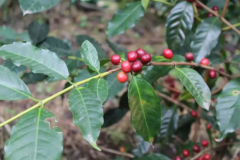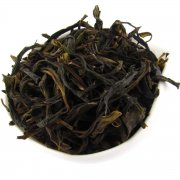Brazil, the highest coffee bean producer in the world, introduces the origin, history and characteristics of coffee beans.
Brazil is the world's largest coffee producer, coffee is mostly produced in the plain or plateau savanna climate zone, the average annual temperature is about 20 ℃, excellent climate and most flat geographical conditions can be large-scale coffee planting in Brazil, and the use of machinery to harvest coffee fruits, it is conceivable that the output is amazing.
The origin of Brazilian coffee beans:

Brazilian coffee was introduced to Brazil from French Guiana in the 1720s. Francesco Paletta, a Portuguese captain from Brazil, captured the heart of the then governor's wife in Cayenne, the capital of French Guinea, and successfully brought coffee seeds to Brazil. Since then, coffee has adapted rapidly in Brazil, spreading from the north to the southeastern state of Sao Paulo. By 1845, Brazilian coffee beans accounted for 45% of the world's coffee beans and became the main source of income in the state of Sao Paulo.

Flavor characteristics of Brazilian coffee beans:
Brazilian coffee was introduced to Brazil from French Guiana in the 1720s. Francesco Paletta, a Portuguese captain from Brazil, captured the heart of the then governor's wife in Cayenne, the capital of French Guinea, and successfully brought coffee seeds to Brazil. Since then, coffee has adapted rapidly in Brazil, spreading from the north to the southeastern state of Sao Paulo. By 1845, Brazilian coffee beans accounted for 45% of the world's coffee beans and became the main source of income in the state of Sao Paulo.
Brazilian coffee bean varieties:
There are many varieties of coffee grown in Brazil, with red bourbon, yellow bourbon, New World and Kaduai as the main varieties. Kaddura, Akaia, Obata, Alamosa, pointed body bourbon and so on have also been planted and studied.

Coffee bean producing areas in Brazil:
Brazil has 21 states and 17 states produce coffee, but seven of them produce the most, accounting for 98% of the country's total output.
The seven states are: Sao Paulo (Mogiana, Centro-Oeste), Norte Pionerio do Paran á, Bahia (Planaltoda Bahia, Cerrado da Bahia, Atlantico Baiano), Montanhas do Esp í rito Santo, Conilon Capixaba), Minas Gerais (Sul de Minas, Cerrado Mineiro, Chapada de Minas, Matas de Minas), Rond ô nia and Rio de Janeiro.
Important Notice :
前街咖啡 FrontStreet Coffee has moved to new addredd:
FrontStreet Coffee Address: 315,Donghua East Road,GuangZhou
Tel:020 38364473
- Prev

Introduction of coffee varieties in Colombia-introduction of coffee beans produced in the main producing countries in the world.
Like Brazil, Colombia, as the world's main producer, has excellent geographical conditions that are tailor-made for coffee cultivation. Colombia has changed from marijuana as the pillar to coffee as the pillar. With the strong support of the government, especially after the sweep of leaf rust, Colombia has also begun to diversify its coffee varieties. As in other areas, the iron pickup
- Next

Notes on the Flavor of Oolong Tea: what are the differences between Guangdong Fenghuang Danzong Tea and Wuyi Rock Tea
Last year, I tried to make tea with grapefruit peel. So, when I saw the description of this tea and it mentioned the taste of citrus peel, my interest reached its peak. Caption: the name "flower" literally means citrus flower. As you can guess from the name, it has a soft aroma of citrus peel and flowers on the cream base. Usage: 1 gram of tea, every 15 ml of water, with a small teapot or cover bowl. | |
Related
- Beginners will see the "Coffee pull flower" guide!
- What is the difference between ice blog purified milk and ordinary milk coffee?
- Why is the Philippines the largest producer of crops in Liberia?
- For coffee extraction, should the fine powder be retained?
- How does extracted espresso fill pressed powder? How much strength does it take to press the powder?
- How to make jasmine cold extract coffee? Is the jasmine + latte good?
- Will this little toy really make the coffee taste better? How does Lily Drip affect coffee extraction?
- Will the action of slapping the filter cup also affect coffee extraction?
- What's the difference between powder-to-water ratio and powder-to-liquid ratio?
- What is the Ethiopian local species? What does it have to do with Heirloom native species?

